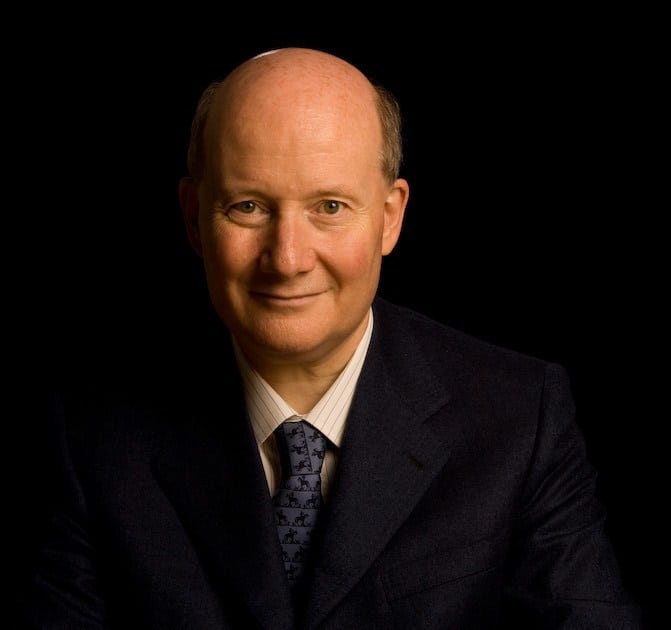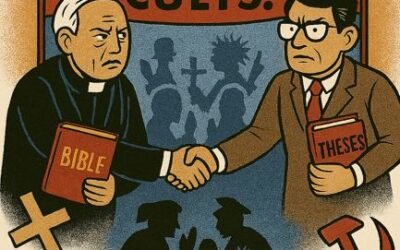The violent, extremist organization has repeatedly demonstrated that it can overcome bans and reorganize with new shapes and names, as long as the broader problems remain unaddressed.
by Massimo Introvigne

The Pakistani government has officially banned Tehreek-e-Labbaik Pakistan (TLP), an extremist Islamist party notorious for its violent mobilizations against religious minorities and those accused of blasphemy. The decision, announced in October 2025, is being hailed by some as a long-overdue step toward curbing religious extremism. Yet, as “Bitter Winter” extensive seven-part investigation into the movement predicted, banning the party may be more symbolic than transformative unless accompanied by deeper structural reforms.
Founded in 2015 as the political arm of the religious organization Tehreek-e-Labbaik-ya-Rasool-Allah (TLYRA), created in 2013 by the late cleric Khadim Hussain Rizvi, TLP emerged from the Barelvi tradition of Sunni Islam. The party’s central platform has always revolved around the defense of Pakistan’s blasphemy laws—among the harshest in the world—and the demand for capital punishment for anyone accused of insulting Islam or the Prophet. TLP’s slogan, “Labbaik Ya Rasool Allah” (“Here I am, O Messenger of God”), became a rallying cry not just for religious devotion but for political intimidation.
TLP’s rise was meteoric. It quickly gained traction among segments of the urban poor and lower-middle class, disillusioned with elite corruption and economic inequality. Its blend of street religiosity and anti-establishment anger resonated with voters who saw in TLP not just a party, but a form of moral rebellion. TLP’s ideology is rooted in a radical rejection of Western culture and values, often expressed through violent protest and threats against journalists, judges, and minority communities.
The party’s history is marked by repeated episodes of violence. TLP has repeatedly staged week-long sit-ins in Islamabad and road blocks, paralyzing the capital and forcing the government to negotiate. In 2018, it led nationwide protests against the acquittal of Asia Bibi, a Christian woman falsely accused of blasphemy. The protests turned violent, with TLP leaders openly calling for the assassination of Supreme Court judges. In 2021, the party was briefly banned after deadly clashes with police, but the ban was lifted following negotiations with the government.
This pattern—of violent mobilization followed by bans, then state retreat—has repeated itself over the years. TLP has shown remarkable resilience, reorganizing under different names and maintaining its street power even when formally banned. Its clerics continue to preach hate without consequence, and its networks remain deeply embedded in Pakistan’s religious and political landscape.
The current ban, while welcome, must be viewed in this context. It follows the party’s attempt in October to use the events in Gaza to promote anti-American riots that left one police officer and several TLP militants dead, with some 100 police injured.

As the Alliance Against Blasphemy Politics (AABP) stated, the ban is “an overdue step toward curbing blasphemy-driven extremism.” But as legal experts and civil society actors caution, real change depends on enforcement. The state’s periodic crackdowns rarely address the underlying ecosystem: clerics who incite violence, politicians who exploit religious sentiment for votes, and a judiciary reluctant to challenge blasphemy narratives.
As one Karachi-based priest told “UCA News”: “We don’t just fear the mobs. We fear how quickly the state disappears when mobs arrive.” This fear is not unfounded. In many cases, police and local officials have stood by—or even facilitated—mob violence against those accused of blasphemy. The victims are often religious minorities, including Christians, Ahmadis, Hindus, and Shia Muslims, as well as progressive Muslims and secular activists.
For Pakistan to restore public faith in the rule of law it must pair such bans with consistent prosecutions, curriculum reform, and protection for those accused of blasphemy. That will require confronting not just the symptoms but the sources of extremism—including the clerical institutions that indoctrinate youth, the media outlets that amplify hate speech, and the legal frameworks that criminalize religious dissent.
The party’s influence extends beyond politics into education, media, and religious life. Its leaders have cultivated a loyal following, using religious rhetoric to justify violence and suppress pluralism. The party’s glorification of Mumtaz Qadri—the assassin of Punjab Governor Salman Taseer—as a national hero is emblematic of its ideology. Qadri’s shrine in Islamabad became a pilgrimage site for TLP supporters, symbolizing the normalization of religiously motivated violence.
The decision to ban TLP is a beginning. But unless the state confronts the deeper structures of extremism—the clerical impunity, the political opportunism, the judicial silence—it will remain just that: a beginning. The clerics who incited violence are still free. The networks that mobilized mobs are still active. And the ideology that fueled TLP’s rise remains unchallenged in textbooks, sermons, and public discourse.
The ban on TLP is a symbolic blow: but symbols matter only when they are followed by substance.

Massimo Introvigne (born June 14, 1955 in Rome) is an Italian sociologist of religions. He is the founder and managing director of the Center for Studies on New Religions (CESNUR), an international network of scholars who study new religious movements. Introvigne is the author of some 70 books and more than 100 articles in the field of sociology of religion. He was the main author of the Enciclopedia delle religioni in Italia (Encyclopedia of Religions in Italy). He is a member of the editorial board for the Interdisciplinary Journal of Research on Religion and of the executive board of University of California Press’ Nova Religio. From January 5 to December 31, 2011, he has served as the “Representative on combating racism, xenophobia and discrimination, with a special focus on discrimination against Christians and members of other religions” of the Organization for Security and Co-operation in Europe (OSCE). From 2012 to 2015 he served as chairperson of the Observatory of Religious Liberty, instituted by the Italian Ministry of Foreign Affairs in order to monitor problems of religious liberty on a worldwide scale.



